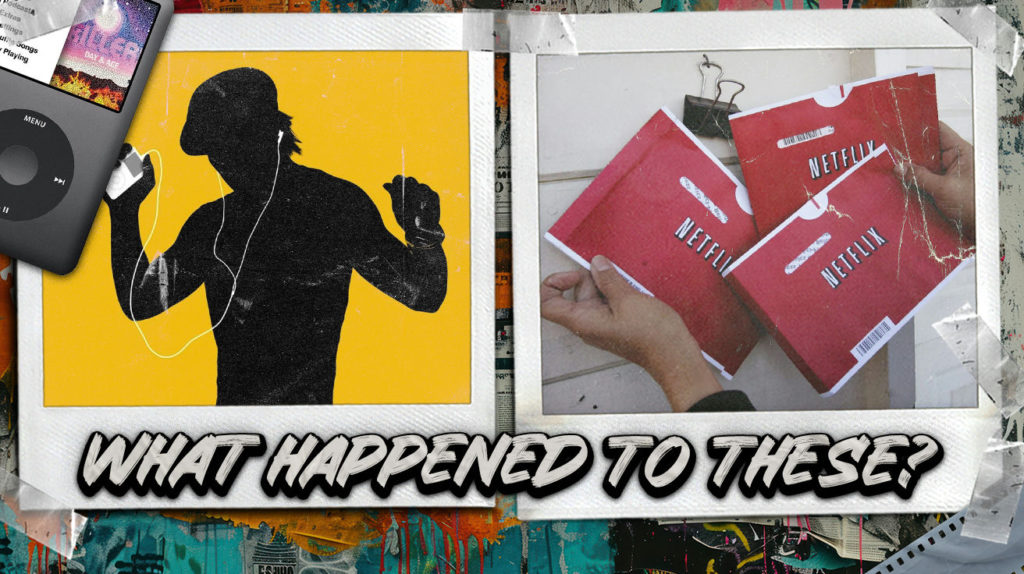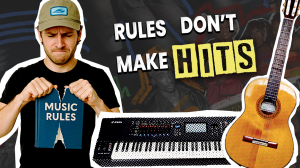
Every tech enthusiast has that drawer—packed with gadgets that once felt revolutionary but now collect dust like forgotten relics. These devices tell stories about how quickly our relationship with technology shifts, revealing how yesterday’s breakthrough becomes tomorrow’s paperweight.
You’ve probably owned at least three items from this list, each representing a moment when the future seemed clear until it suddenly wasn’t. From communication tools to entertainment systems, these technological casualties remind us that in consumer electronics, permanence is the one feature no product can guarantee.
10. BlackBerry (2022): When Keyboards Became Uncool

If you’re old enough to remember typing emails on actual buttons, BlackBerry’s collapse reads like a masterclass in corporate tunnel vision—the company that once owned business communication became the poster child for missing obvious trends. These devices ruled the professional world in the 2000s with their addictive physical keyboards and rock-solid security, creating a generation of executives with “BlackBerry thumb” from constant email checking.
Sales peaked at 52 million devices in 2011, making BlackBerry the smartphone king of its era. Then touchscreens arrived, and while executives dismissed these interfaces as passing fads, consumers voted with their wallets. Market share plummeted from 20% in 2009 to under 1% by 2016 before BlackBerry officially ended legacy device support in January 2022, demonstrating that even the most beloved features become obsolete when user expectations evolve.
9. iPod (2022): The Device That Changed Everything (Until Everything Changed)

“1,000 songs in your pocket” transformed how we consume media, but the iPod ultimately became a victim of its own innovative DNA. Apple’s revolutionary device arrived in 2001 with those iconic white earbuds that became cultural symbols while the Click Wheel remains one of interface design’s greatest achievements, helping transform Apple from computer maker to lifestyle brand.
Sales peaked around 2008-2009 with tens of millions of units sold annually, single-handedly decimating the CD industry and reshaping how artists release music. However, the technology and design philosophy that made it revolutionary evolved directly into the iPhone, which promptly made dedicated music players obsolete.
Apple discontinued the final iPod Touch in May 2022 after selling hundreds of millions of units across multiple generations, proving that even your greatest innovation can become your replacement. The iPod joins a long list of beloved products killed off by rivals throughout consumer technology history.
8. Netflix DVD Service (2023): When Physical Media Had Its Final Spin

Tired of Blockbuster’s brutal late fees? Netflix‘s red envelopes once symbolized movie night liberation for millions before becoming cultural artifacts. The service launched in 1997 with no late fees—revolutionary when Blockbuster charged $4 for keeping “Titanic” an extra day. This subscription model peaked around 2010 with approximately 20 million DVD subscribers, but Netflix executives understood something competitors didn’t: the future belonged to instant gratification, not physical media.
The transition wasn’t immediate, with Netflix maintaining DVD service for users with limited internet or specific content preferences while subscriber numbers gradually declined as streaming quality improved. On September 29, 2023, Netflix shipped its final DVD to fewer than 1 million remaining subscribers, ending a 25-year era with characteristic efficiency. If you’re still clinging to physical media, you witnessed the last stand of the red envelope.
7. PlayStation Vita (2019): The Handheld Console That Smartphones Killed

Console-quality gaming in your pocket sounds perfect until everyone already has a phone that plays games. Sony‘s PlayStation Vita launched in 2012 with console-quality power packed into a pocket-sized package. The device boasted specifications that seemed impossible: gorgeous OLED touchscreen, dual analog sticks, multiple cameras, and processing power rivaling home consoles.
Critics praised its hardware innovations while consumers increasingly turned to smartphone games that traded sophistication for convenience and affordability. Industry estimates place lifetime sales between 12-16 million units—respectable for most products but disastrous compared to its predecessor’s 80+ million sales, illustrating how technical excellence means nothing without compelling software and clear market positioning. Premium hardware crashed into smartphone convenience and lost spectacularly.
6. Microsoft Kinect (2017): When Innovation Outpaced Its Purpose

Eight million units sold in 60 days made the Kinect the fastest-selling consumer electronics device ever—before it became a solution desperately searching for problems. Microsoft launched the device in 2010 with ambitious promises about controller-free gaming that initially captivated consumers. Using infrared sensors and sophisticated cameras, Kinect mapped player movements in three dimensions with impressive accuracy, setting a Guinness World Record by selling 8 million units in its first 60 days.
The novelty wore off quickly as most games implemented motion controls superficially, better suited for party tricks than serious gaming. Microsoft eventually unbundled Kinect from Xbox consoles before discontinuing consumer versions in 2017, though ironically, its depth-sensing technology influenced everything from medical equipment to smartphone facial recognition. Motion controls failed, but motion sensing found its true calling elsewhere.
5. Nokia Lumia (2017): The Beautiful Phone Nobody Wanted

The Lumia line featured some of the most visually striking smartphones ever created, wrapped in an operating system nobody wanted—like building a Ferrari with a lawnmower engine. The Microsoft partnership in 2011 produced devices that stood out in a sea of black rectangles, offering vibrant polycarbonate bodies in bold colors when competitors only sold monochrome options.
Their cameras consistently outperformed rivals while Windows Phone’s tile-based interface felt genuinely different from iOS and Android’s icon grids, but none of it mattered. Windows Phone never captured more than a tiny market fraction, leading Microsoft to acquire Nokia’s phone division for $7.2 billion in 2014 before writing off most of the acquisition and discontinuing the line by 2017, confirming that beautiful hardware cannot overcome weak app ecosystems when developer support determines platform success.
4. Wii U (2017): Nintendo’s Awkward Middle Child

Following a 100-million-unit blockbuster with a product nobody understood? The Wii U represented Nintendo’s most confusing console launch—a device whose purpose baffled consumers and retailers alike. The device offered intriguing possibilities like off-TV play and asymmetric multiplayer experiences, but marketing failed to communicate whether this was a Wii accessory or entirely new system.
This confusion resulted in catastrophic sales, with Nintendo’s official figures showing just 13.56 million lifetime sales—the company’s worst-performing home console. Third-party developers quickly abandoned the platform while Nintendo discontinued the system in January 2017, just weeks before announcing its successor, illustrating how good ideas require clear communication to succeed. Clear messaging turns good ideas into great products—confusing marketing kills both.
3. Vine (2017): Six Seconds of Fame

Need to express creativity in impossibly brief moments? Vine compressed innovation into six-second clips years before short-form video dominated social media. Twitter acquired the platform before its 2013 public launch, limiting videos to just six seconds when YouTube favored longer content. This constraint sparked remarkable innovation, with the platform’s looping feature turning brief moments into hypnotic content that launched countless entertainment careers through clips demonstrating how creativity thrives within limitations.
Despite cultural impact and tens of millions of users, Vine struggled with monetization as Instagram and Snapchat introduced competing video features with fewer restrictions. Twitter announced Vine’s shutdown in October 2016, officially closing the service in January 2017, with TikTok eventually filling this cultural vacuum and validating that Vine’s concept was simply ahead of its time. Six seconds of brilliance couldn’t survive without sustainable revenue—creativity needs capitalism to thrive.
2. Portable GPS Units (2010s): When Single-Purpose Devices Lost Their Way

Turn-by-turn directions revolutionized navigation until smartphones posed a simple question: why carry a separate device? Standalone GPS navigators from Garmin and TomTom once represented cutting-edge consumer technology before smartphones made them obsolete practically overnight, transforming navigation in the early 2000s by replacing paper maps with turn-by-turn directions. The market expanded rapidly from 2004-2007, with tens of millions of units sold annually as companies like Garmin saw stock prices soar.
The iPhone’s 2007 arrival, followed by Google Maps navigation in 2009, posed a simple question: why purchase and update a single-purpose device when your phone handled navigation plus everything else? By the early 2010s, smartphone navigation had become mainstream, while GPS unit sales collapsed, exemplifying how multi-function devices can eliminate entire product categories regardless of how essential they once seemed.
These navigation tools are now part of many other things Gen X grew up with that younger generations would barely recognize today.
1. Papyrus (2020): When Digital Sentiments Replaced Paper Ones

If you’re someone who still believes handwritten sentiment matters, Papyrus stores once offered premium cards and stationery before digital communication rendered physical expressions increasingly obsolete. The company expanded from its 1973 founding to over 450 locations with distinctive gold logos and high-end paper products. Papyrus found success positioning greeting cards as luxury items worth $7-$10 when competitors sold similar products for half the price.
Digital alternatives fundamentally changed consumer behavior as e-cards, social media birthday wishes, and text messages gradually replaced physical cards for most occasions. In January 2020, parent company Schurman Retail Group filed for bankruptcy and closed all remaining Papyrus stores, showing how digital alternatives can displace even emotionally-resonant physical products when convenience and cost advantages align—like watching handwritten letters lose to email in slow motion. Sentiment couldn’t save stationery from smartphones and social media.





















